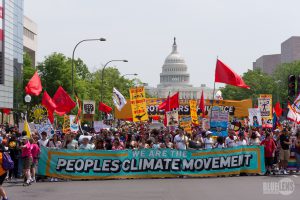The ongoing joke in Idaho schools is that mentioning the phrase “climate change” is similar to uttering the name “Voldermort” from the Wizarding World of Harry Potter. And although thinking about students and teachers disguising conversations about the defining crisis of our time as “He-Who-Must-Not-Be-Named” is laughable, it isn’t much of a joke when your teaching career is actually at risk for even mentioning the word climate.
Now, if we instead worked together (perhaps forming an “Order of the Phoenix,” or maybe in Idaho it would be an “Order of the Wolverine?”) to tackle climate change, then we could build a better future for all Idahoans. Instead, a dark cloud of Dementors is hanging over basic education standards in Idaho—impacting the generations that will deal with climate change the most.
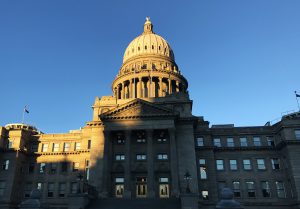
Removing climate from teaching standards in 2016 was rationalized by an Idaho State Representative because they disagreed that “humans were the primary cause” of climate change. Decades of climate disinformation developed by the oil industry also hasn’t helped us progress. They pioneered new communications strategies that purposely misled the public so we would focus on the “uncertainty” of science. But there is no disagreement—scientists all agree that humans’ insatiable demand to burn dirty fossil fuels is causing climate change. This should make us especially frustrated that the 1988 Exxon disinformation campaign that emphasized uncertainty is still being parroted by Idaho policy makers today.
Despite the state legislature stacking the odds against them, youth are engaging in climate action and advocating for a better future for themselves. Teachers are also finding ways to teach about “You-Know-Who,” even if they can’t say its name. Youth are begging for—and demanding—climate action. It’s time for Idahoans to support them. If you are ready to support youth who care about their futures in a changing climate, as well as their educators, there are three programs with active open enrollment that you should know about. Two are for students in the Boise area, and one for educators statewide.
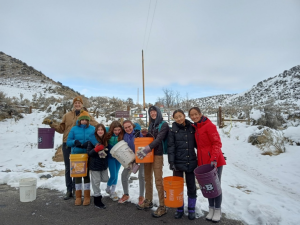
Boise Youth Climate Action Council
This program has been around since 2021, and seeks to involve youth in the City of Boise’s decision-making processes to build tomorrow’s climate leaders. This highschool student-run council started as an initiative from Boise Mayor Lauren McLean when the Boise Climate Action Road Map was being developed, which will eventually get the City to be carbon neutral by 2050. The Youth Council is a small group of people that serve a year on the council, working together to develop themes that have focused on gardening, urban planning, and extreme heat. Not only is it a great networking opportunity to learn about ongoing climate efforts in the City, but you get to hang out with other climate kids to create a better tomorrow!
Community gardening can teach students about where our food comes from and how changing soil management practices can help growers weather the next drought. Smart urban planning, like developing higher density housing—especially along major transit corridors—can limit urban sprawl, increase exercise among residents, and decrease vehicle-miles traveled. In Boise’s historical record, we typically had two weeks when temperatures exceeded 91ºF; but in our near future we will expect to have at least two months of temperatures greater than 91ºF. Over the last 30 years, extreme heat events are responsible for 3-4 times more weather-related fatalities compared to the next most common category (floods). It’s getting so hot in summer that farmworkers are forced to adapt by becoming nocturnal and laboring in the dark. I am thankful that the Youth Council is focused on the impacts of extreme heat in the Treasure Valley and making sure our decision makers recognize the peril of ignoring this threat.
Nowhere in those descriptions have I said “Voldemort.” Call it aridity, call it droughts, call it extreme weather, or call it unprecedented wildfires; no matter how you discuss or describe “Voldemort,” it will become impossible to pretend like it doesn’t exist when we’re choking on summer wildfire smoke.
You can read more about Boise’s Youth Climate Action Council, and apply here (or share it with the youth climate advocate in your life!). Applications close June 15th. For more information on these Boise-specific programs you can contact Alex Brooks via email at (ambrooks[at]cityofboise[dot]org).
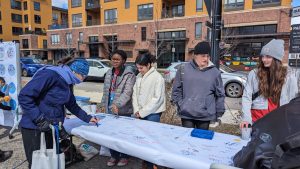
Boise Youth Climate Action Fund
The second program to be aware of is for 15-24 year olds in the Boise area who have projects that focus on sustainable art/education, ecosystems restoration, buildings/energy, transportation, consumption/waste, food systems, water, and innovation/engagement. Nowhere in those categories available for funding does it say climate, but it doesn’t need to be—because addressing climate change means re-examining almost everything we do in our daily lives, from how we get to the grocery store to what we do with our leftovers.
If you are or know a teen or young adult who has an idea for a project they can implement in Boise’s city limits before the end of 2024, this is the program for you! Applications are open for the month of June, with funds distributed in August. Projects need to be completed by the end of the year. To apply, you need a community partner (e.g. school, green team, local non-profit) of which the Idaho Conservation League will be happy to contribute. Boise’s Mayor McLean was one of 100 mayors across the U.S. asked to participate in this larger project through Bloomberg Philanthropies. The City expects to fund 10 to 50 projects with between $1,000 – $5,000 for each individual award. If this year’s project is successful, we hope to see this program continue next year! See Boise’s Youth Climate Action Fund homepage for information sessions to be held in June and additional information.
Teachers Sustainability Summit – Project GREEN
The third and final program is specifically for teachers and educators around the state who want more tools and examples of how to teach about He-Who-Must-Not-Be-Named (climate change) in their classrooms. Applications are open for teachers, with funds to help cover the costs of attendance. It will be held on June 5th and 6th at Riverstone International School in Boise. Learn more details about this year’s Project GREEN or read through last year’s agenda.
This year’s theme is GRIT – Get Gritty and Sustainable. While the agenda has not been formally released, we’ll have some great keynote speakers, environmental field experiences, discussion on recycling and waste, student engagement, and classroom activities that teachers can incorporate into their lesson plans. The Idaho Conservation League is a partner organization this year along with myself (ICL Climate Program Manager), as I’ll be conducting a teaching-soils demonstration.
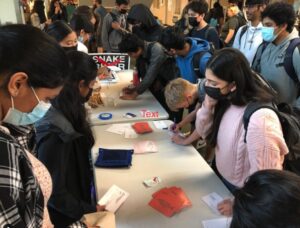
Perennial Resources
Those three programs detailed above have tight deadlines, but there’s plenty of other resources specific for education in Idaho. The Idaho STEM Action Center helps to prepare our youth for the competitive workforce ahead of them. The Idaho Science Teaching Association has a conference in Coeur d’Alene in August. Bogus Basin has a relatively new winter and summer outdoor environmental education program that helps fund students to visit the mountains to get some hands-on outdoor education. The University of Idaho and the City of McCall partnered up to create the McCall Outdoor Science School (MOSS), giving more youth an outdoor education. Idaho’s Chapter of the Sierra Club has their Climate Justice League geared toward youth activism. The Idaho Environmental Education Association (IDEEA) has been helping K-12 educators incorporate human impacts on the natural world for over two decades, they also have recurring grant opportunities! This is just the tip of the iceberg, check out IDEEA’s website to find a long list of youth-focused outdoor education opportunities. I’d be remiss not to mention we—the Idaho Conservation League—will be announcing our new High School lead for Youth Salmon Protectors soon, so follow along on Instagram or on their webpage to stay updated and/or get involved!
I don’t know if the State legislature will remove the Voldemort-muzzle from our educators, but I do know that even if the status quo remains, there’s still plenty of learning opportunities for our kids. In fact, it’s even more reason to work harder to educate our youth on the challenges we face today because the longer we wait, the harder these problems will be for our kids to fix when they are our age.
A few years ago, some young Millennial writers were interviewed about the climate crisis. They compared our numerous interlocking climate dilemmas as the horcruxes that needed to be destroyed in order to defeat Voldemort. If each tenth of a degree between 1.5°C and 2.0 were a horcrux, stopping each 0.1 degree of warming “is going to involve an almost impossible seeming political mission. And that the rest of our lives is going to be spent on [climate change]… But also, if somebody had likewise told me that you’re going to spend the rest of your life coming together with people who share your values to try to create a polity and economy that actually treats everybody with dignity, I can’t think of a more meaningful way to spend a human life.”
I am in vigorous agreement here, but it will take all of us, like kids pushing adults to do more. Adults listening to their children’s concerns and engaging with their friend groups to spread the impact. Adults then need to push elected officials and representatives. One household at a time, one school at a time, one community at a time. We need all of us working together—a true Dumbledore’s Army—to tackle the Voldemort of our world: climate change.
